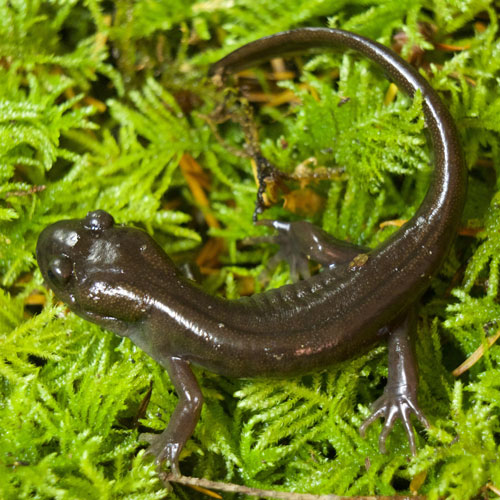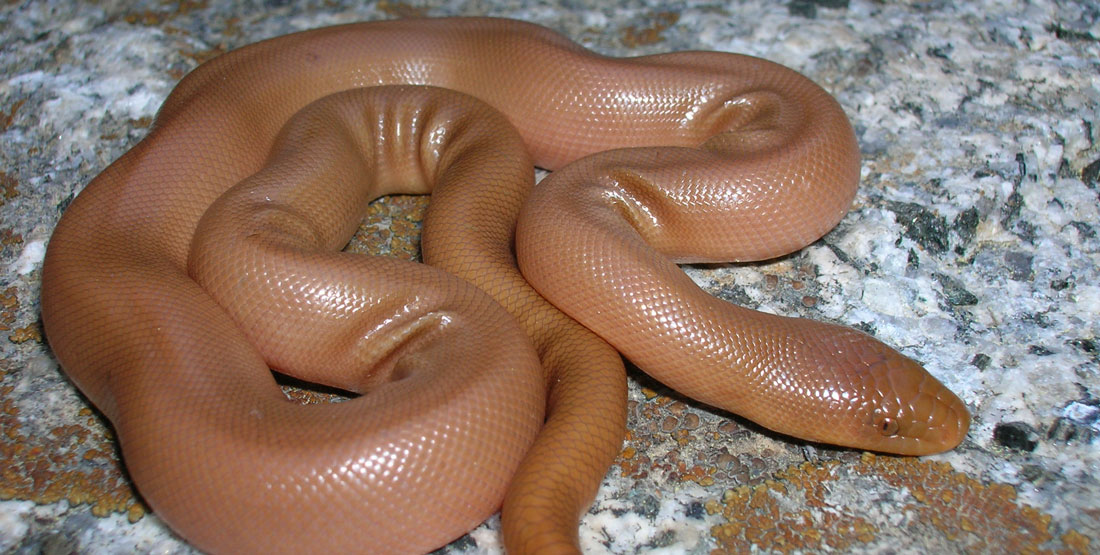Fast Facts
Where they live
- View a map of where they live.
- Even though they tend to live in the same small patches of land year after year, Northern Rubber Boas overall range from southern California all the way to British Columbia.
- Can also be found in Idaho, western Wyoming, central Montana, northern Nevada, and Utah.
- Northern Rubber Boas are adaptable to nearly any sort of habitat but, since they are not very heat tolerant, they are not as likely to be found in open places of warm weather.
- Prefer to spend much of their time in cooler and moist areas like under logs, rocks, and rodent burrows.
What they eat
- Northern Rubber Boas are nocturnal hunters.
- They primarily prey upon the small vulnerable young of underground-nesting mammals (like voles, deer mice, and shrews).
- Oftentimes have scars on their tails from mother rodents trying to protect their young.
- Northern Rubber Boas can also feed on lizard and snake eggs.
Breeding
- Female Northern Rubber Boas give live birth to two to eight young in the late summer or fall.
- Each baby snake weighs only 7.5 grams and is 7 to 11 inches long.
- Young Northern Rubber Boas move-out during spring after their first hibernation and reach maturity at around 2 to 3 years old.
Cool Biology Facts
- Hunters from certain Native American tribes wore Northern Rubber Boa tails as charms believing they would help protect against grizzly bears.
- In order to help tolerate extreme cold, Northern Rubber Boas can maintain a higher internal temperature around their head than the rest of their body or surrounding environment, hence safeguarding their brains at a safe warm temperature. Some Northern Rubber Boas have even been recorded with body temperatures less than 44°F!
Threats
- Northern rubber boas are common species with seemingly healthy populations throughout their wide range.
- Main threat is over-collection for the pet trade, although it is currently illegal to sell wild-caught Northern rubber boas in the United States.
- View their status on the IUCN Red List of Threatened Species.

Amphibians & Reptiles of Washington
Do you know where rattlesnakes live in our state? Or which salamander breathes through its skin? Explore the fascinating diversity of the 26 species of amphibians and 28 reptiles found in Washington state.

